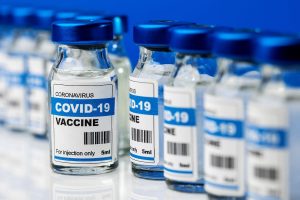The traumatic effects of child abuse and neglect can persist for decades, often with substantial economic consequences, researchers report.
“We found associations of child neglect and abuse with adult socioeconomic circumstances at age 50,” said lead author Snehal Pinto Pereira.
Physical, social or emotional abuse in childhood was linked at midlife to a greater risk of time off from work due to long-term sickness, said Pereira, a research associate at University College London’s Institute of Child Health.
Mistreatment in childhood also lowered the odds of owning a home, she said.
“The associations for child neglect were linked to their poor reading and mathematics skills in adolescence, which in turn could hamper their ability to find work and progress in the job market,” she explained.
The research is only observational and doesn’t establish a direct cause-and-effect relationship. Still, it appears that children who suffered more than one type of abuse were most likely to be thwarted economically.
“The risk of a poor adult socioeconomic outcome was greatest for those experiencing multiple types of child maltreatment,” Pereira said.
These findings are important because “such disadvantage could in turn influence the health of individuals affected and also that of their children,” she said.
The study was published online Dec. 19 in the journal Pediatrics.
Child abuse and neglect are major public health problems in the United States, according to the federal Centers for Disease Control and Prevention.
In 2014, around 700,000 American kids suffered from abuse or neglect. More than 1,500 died from it, the CDC said.
Toddlers younger than 3 account for more than one-quarter of victims, the agency said.
One study estimated that 1 in 4 children experiences some form of child abuse or neglect in their lifetime, according to the CDC.
For the new study, Pereira and her colleagues collected data on more than 8,000 British children born in 1958. Up to age 16, the researchers looked for evidence of physical and emotional neglect, such as withholding affection; sexual and physical abuse; emotional abuse; and witnessing partner abuse.
Then they examined the associations of child neglect and abuse with adult job absenteeism, unemployment, education, income, finances, social standing and social mobility.
The researchers found that 1 percent of the children had been sexually abused, 10 percent had suffered psychological abuse and 16 percent had experienced neglect.
Overall, one out of five experienced some type of abuse, while 10 percent experienced two or more forms, according to the report.
Prevention of abuse and neglect is the key step to stopping this downward spiral, said Dr. Jefry Biehler, chairman of pediatrics at Nicklaus Children’s Hospital in Miami. Barring that, it’s critical to identify and help abused and neglected children as soon as possible, he said.
“What many of us in the field have been working for and asking for is that we not limit ourselves to protecting children from abusers, but to go beyond that to take care of the abused child beyond the court system,” said Biehler.
These children need medical and psychological help and support from foster families or their own family members, he said.
They may also need academic remediation to make up for any mental or developmental deficiencies, he added.
“In addition, we need to do anything we can to normalize their life and make sure they recover from the trauma they experienced as much as possible,” Biehler said.
Many children miss out on needed care, Biehler added. Access to care and cost of care are two common barriers, he noted.
“Sometimes it can be poor recognition by families or others about the long-term needs of the child. Even pediatricians may not recognize the long-term impact on these kids,” Biehler said. All have a responsibility to try to make sure that doesn’t happen, he said.
“The work we do early on does have great meaning, and the impact we have in helping people recover from these terrible events is important,” he said.
More information
For more on the long-term consequences of child abuse, visit the U.S. Department of Health and Human Services.
Source: HealthDay
Copyright © 2025 HealthDay. All rights reserved.

















